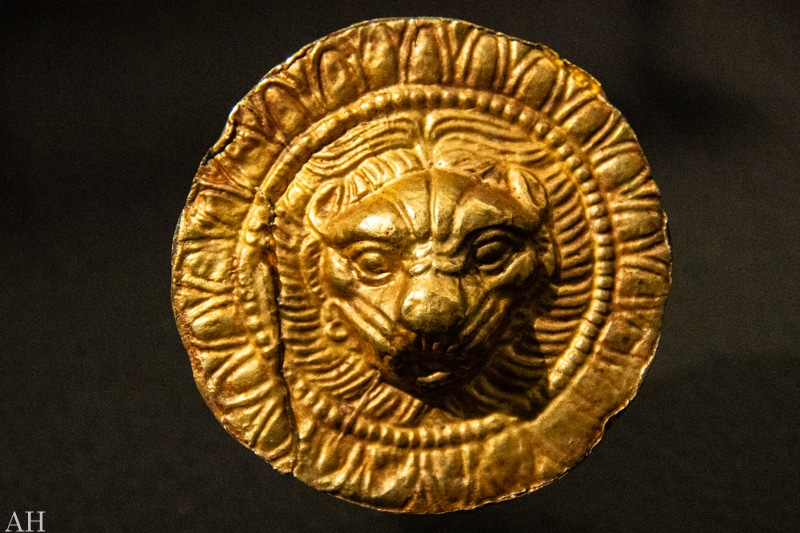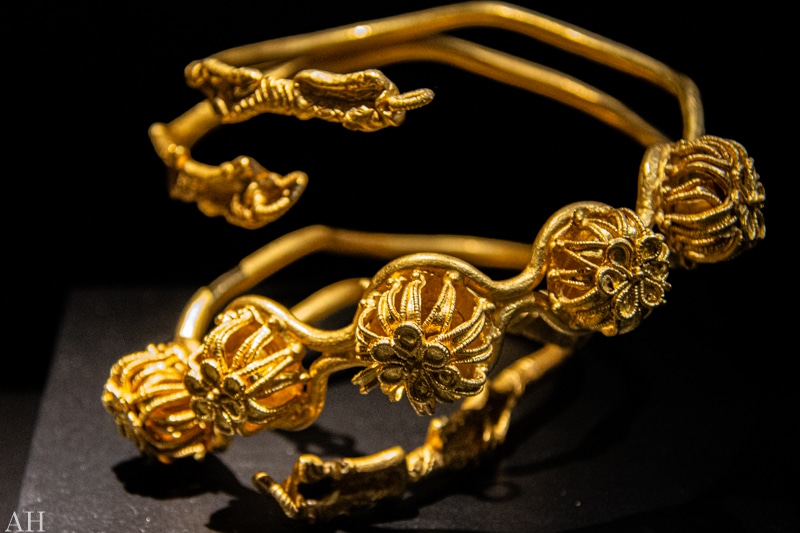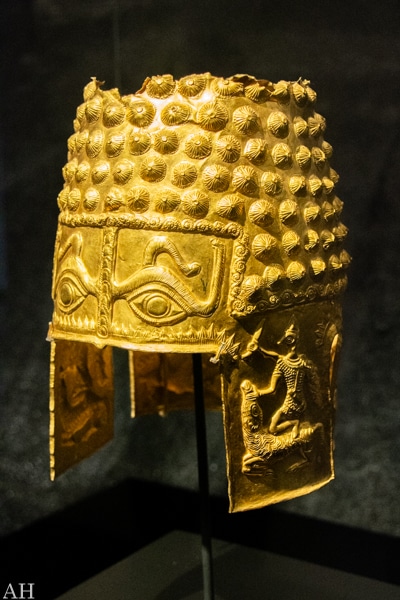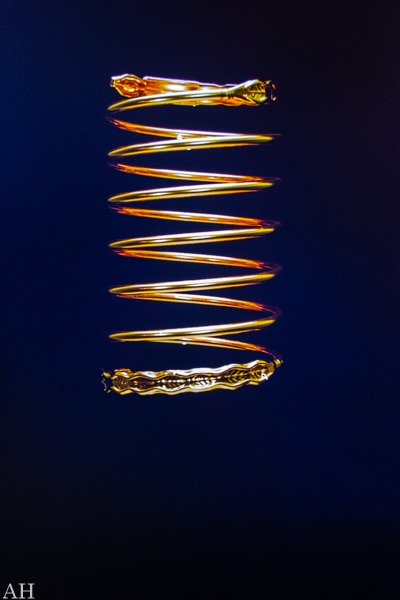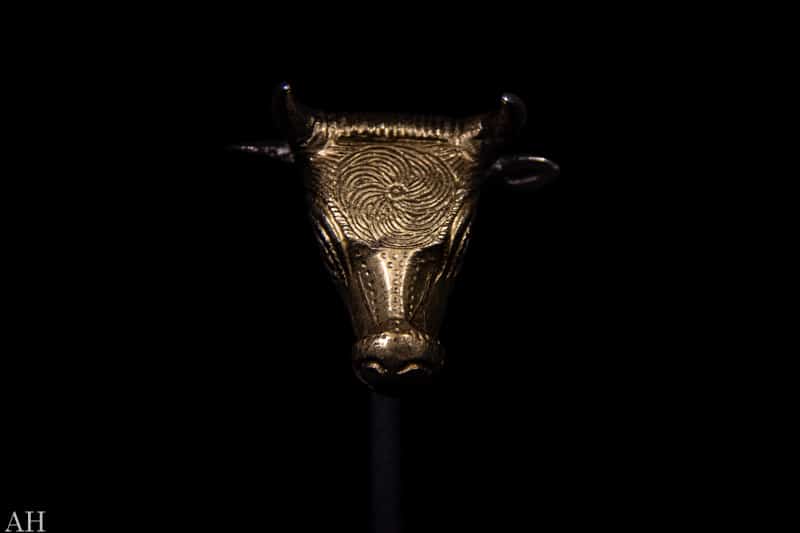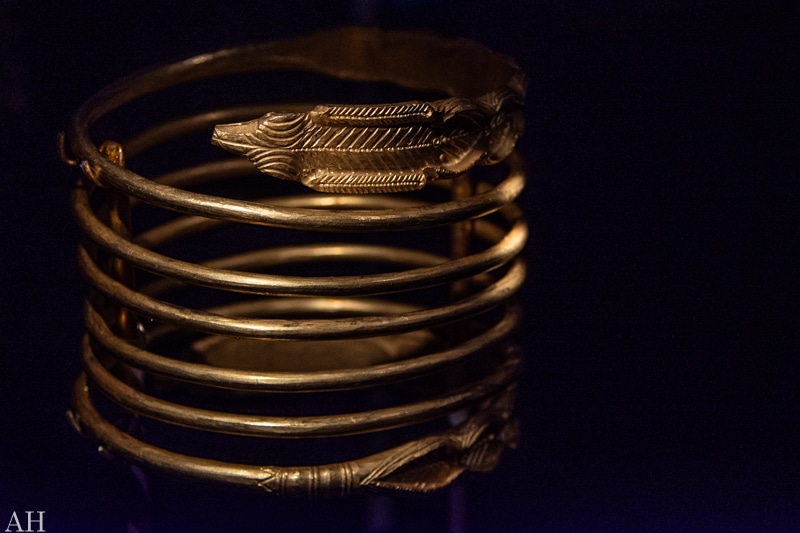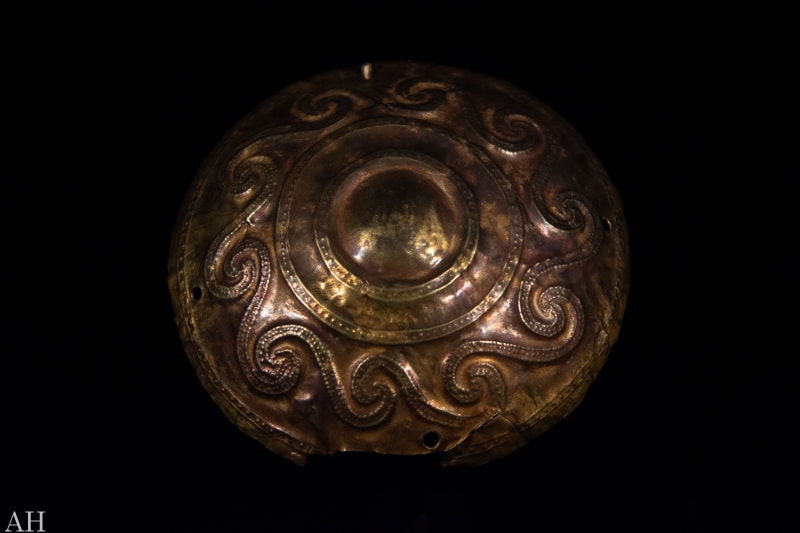Een zaal vol prachtige blinkende gouden en zilveren objecten, van munten tot zwaarden. Met zoveel glimmende spullen wordt de ekster in mij wakker. Maar in plaats van goud neem ik kennis mee naar huis: inzicht in een cultuur die ‘vergeten’ is.
Dacia – Rijk van goud en zilver in het Drents Museum is zo’n tentoonstelling waar ik met alle plezier ronddwaal; mijn ogen de kost geef en kennis opdoe over een periode in de geschiedenis van het (huidige) Europese continent waarvan niet veel bekend is. Bij Dacia denk je nu eerder aan een automerk dan aan een uitermate interessant prehistorisch volk met een boeiende cultuur en prachtig erfgoed. Hopelijk komt daar met deze tentoonstelling verandering in.
Vergeten maar niet uitgewist
Het Drents Museum staat bekend om zijn internationale archeologische tentoonstellingen die een vergeten periode in de wereldgeschiedenis belichten. Het goud dat er nu te zien is, is soms al vierduizend jaar oud. Op het moment dat in onze streken de Bronstijd begon, beleefde Dacië al een Gouden tijdperk. Het rijk van de Daciërs bevond zich in het huidige Roemenië. Het was een volk dat amper tot niet in de geschiedenisboeken voorkomt. Dat is niet nieuw in de geschiedschrijving. Die gaat meestal over mannen met macht die ‘gewonnen’ hebben. Vrouwen, ‘gewone mensen’ en verliezers vallen altijd buiten het narratief.
Dankzij de tentoonstelling in het Drents Museum herinnerde ik mij dat de Dacische samenleving en cultuur werd genoemd in het boek ‘Tijdlijn van de Geschiedenis’. Daar wordt Dacië gekoppeld aan de Romeinen en de overwinning van de Romeinse keizer Trajanus.
Zoals de Roemeense conservator Christiana Tataru van het Roemeense Museum van Nationale Geschiedenis in Boekarest al bij de persbezichtiging vertelde, is internationaal samenwerken essentieel voor zulke grote exposities. Dankzij het Drents Museum, vertelt directeur Harry Tupan, is de expositie nu eindelijk mogelijk. Dacië was een belangrijke samenleving die aandacht verdient. Om de huidige Roemeense cultuur te begrijpen moeten we eerst kennis vergaren over hun basis: de Daciërs.
Ervaren
Niet alleen de schoonheid van de objecten maakt een tentoonstelling, het gaat ook om het gevoel dat die bij je oproept. Dit wordt in Dacia mede gedaan door projecties op de muren van de zaal. Een ervan is geïnspireerd op de Karpaten, het grootse gebergte dat in een halve cirkel door Oost-Europa ligt. Het is het laatste bolwerk van wilde dieren en biodiversiteit van Europa.
De tentoonstelling is op te delen in vier tijdvakken, met voor elk tijdvak een kernobject. In een prachtige animatie wordt dat object naar het heden getrokken. Helaas heb ik de bijbehorende projecties niet live kunnen ervaren, omdat die nog niet werkten.
Reflectie
Het centrale moment van de tentoonstelling nodigt uit tot zelfreflectie. Wat betekent al dat goud en zilver voor die ekster in mij? Is het symbolisch? Bij mijn eigen sieraden denk ik aan liefde en erfgoed. Het zijn herinneringen aan mijn ouders, grootouders, aan familie en onze geschiedenis. Maar soms gaat het ook over smaak en wansmaak, overdaad en geld.
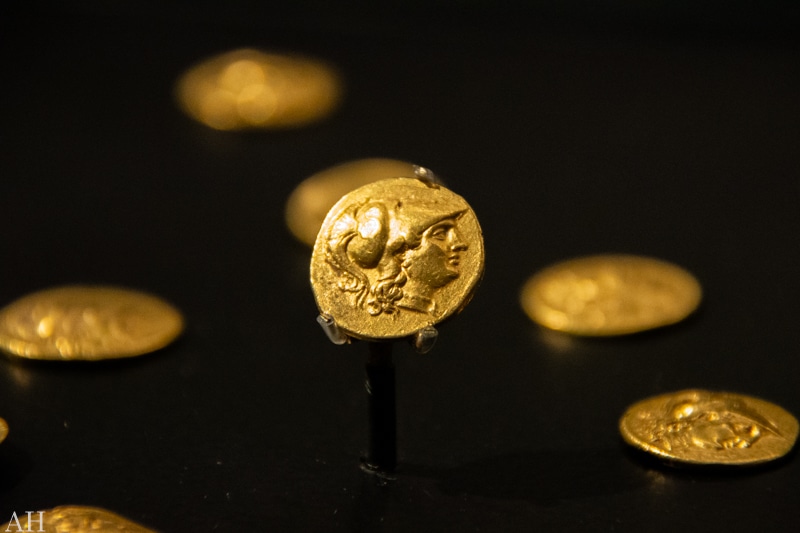
Bij de boeiende 673 objecten in de expositie stond ik stil bij de pracht en het vakmanschap. Het indrukwekkende artistieke niveau. De gouden en zilveren munten met de typische en bekende profielen waarmee al die eeuwen geleden goederen zijn gekocht. Ze zijn van mensen die door de geschiedenisboeken misschien zijn vergeten, maar die allen op de een of andere manier een stempel hebben gedrukt op het verhaal van Dacië. Mooi vond ik vooral de diadeem van Buneşti-Avereşti uit de derde eeuw na Christus, de koninklijke Dacische armband uit Sarmizegetusa Regia uit de eerste eeuw voor Christus en natuurlijk de helm van Coţofeneşti. Ook waren er prachtige zilveren bekers uit de schat van Sâncrăieni, uit de tweede helft van de eerste eeuw voor Christus tot begin eerste eeuw na Christus.
Activiteiten
Het Drents Museum organiseert altijd een interessant programma rondom een tentoonstelling en dat geldt ook voor Dacia – Rijk van goud en zilver. Van gratis lezingen tot Studio Dacia waar men munten en sieraden kan maken. Meer informatie: drentsmuseum.nl
